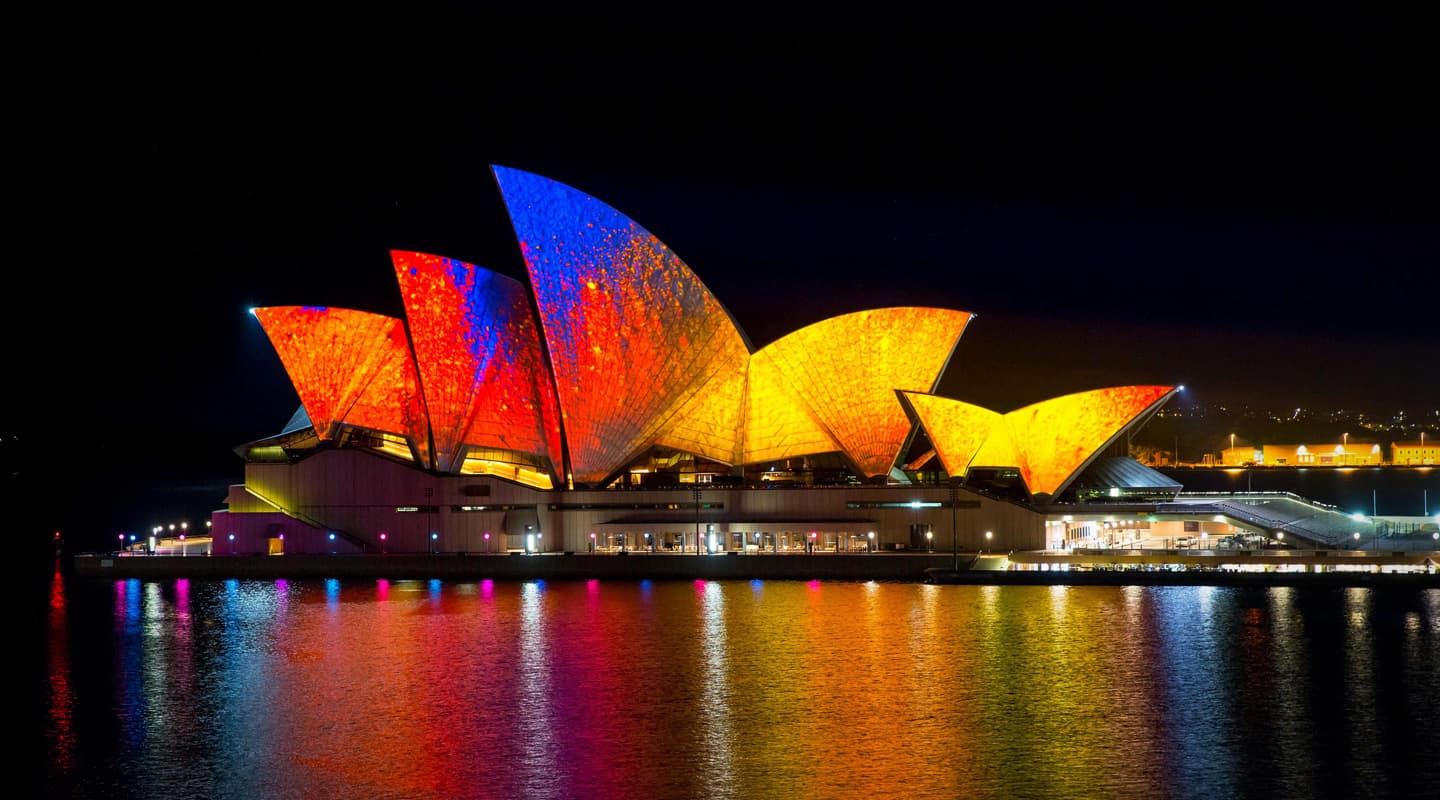
Intensely Vivid
Sydney’s wintertime Vivid Festival continues to pick up momentum.
Text:/ Paul Collison
It’s hard to believe that the Vivid Festival in Sydney is already in its seventh year. From very humble beginnings, where a piece of snake light in a tree was passed off as Art, Vivid has grown to become one of the biggest arts festivals in the southern hemisphere. This year, the festival has expanded to include areas such as Martin Place, Darling Harbour, The Star casino and even Sydney University, all on top of the well-established Circular Quay area. The broadening scope of the festival is part of Destination NSW’s goal to increase foot traffic in the CBD and most importantly, fill empty hotel rooms and restaurant tables at an otherwise slow time of year. Judging by this year’s crowd, the festival was another huge success. I went for a walk around the festival with my family, to get a punter’s perspective and for one of the first times, actually partake in the festival. First stop on the tour was the Opera House.
HOUSE RULES
There is no argument that the highlight of Vivid is the lighting of the sails on the Sydney Opera House. The usually drably-lit sails are sensationally transformed to become a visual centerpiece of the festival. It is easy to take this for granted, as we see the Opera House used as a projection surface often throughout the year for various special events. The ability to deliver such a project is one that only a few AV specialists are capable of. For the sixth year in a row, The Electric Canvas (TEC) have provided both the projection and replay systems for the event. Peter Milne, managing director of the company, has a long history in projection and light control. His extensive experience and detailed understanding of the medium of light, is the key to maximising light level and controlling overspill (often described as light pollution). Milne proudly points out there was no light spill or intrusion into the building spaces anywhere in the Opera House.
Great care is taken to make sure the projection from the Overseas Passenger Terminal, some 420m away from the sails, is accurate down to the millimeter. In fact, the projection alignment on the sails is so accurate and detailed, that each tile can be individually mapped and form part of the content. The texture of the tiles on the roof becomes an important part of the image mapping. Architectural templates created by TEC and 3D model survey data was sent to UK motion graphic company, 59 Productions, who were engaged as content creators for the 2014 festival. Drawing on experience from events such as the 2012 London Olympic Games ceremonies and a plethora of theatrical events, 59 Productions used some unique approaches when building this year’s content.
SCALING THE OPERA HOUSE
Using the 3D model data, they constructed a scale model of the SOH in their home base London. This not only allowed them to test their content on a real-life model, but it also meant they could film the model engaging with elements such as water or paint and obtain a more organic feeling with the dynamics of their content. By throwing paint at the model, or showering the model with water, 59 Productions could film the effects and then use that footage as part of the 15-minute show. They even used MA Lighting’s offline lighting visualisation tool, grandMA 3D, to illustrate lighting effects directly on a virtual model inside that program, and include them in the narrative. All these approaches combined for a truly stunning show.
Unfortunately, the soundtrack for the show was barely audible on the Opera House Western forecourt, however once you snuggled up next to a loudspeaker, the soundtrack added a great deal of context to the animation and enhanced the project immensely. The projection rig consisted of 15 x Christie 20K projectors driven across four source channels of video. One other fascinating fact is the speed at which the Electric Canvas can build the system. Arriving on site at 2pm, the system was installed, lined up and ready within five hours, allowing content to be reviewed on the sails later the same night. TEC’s discreet lineup strategy also meant that touchups to the alignment could be made each day at dusk, prior to the show commencing, without the need for garish lineup grids to be thrown about the sails.
Main image: Virtual paint being tipped over the sails of that building. Photographer: James Horan.
![Gamma-World---best-pic!!RC_20140522_390-4096[3]-pichi](https://www.av.technology.audiotechnology.com/wp-content/uploads/2014/07/Gamma-World-best-picRC_20140522_390-40963-pichi.jpg)
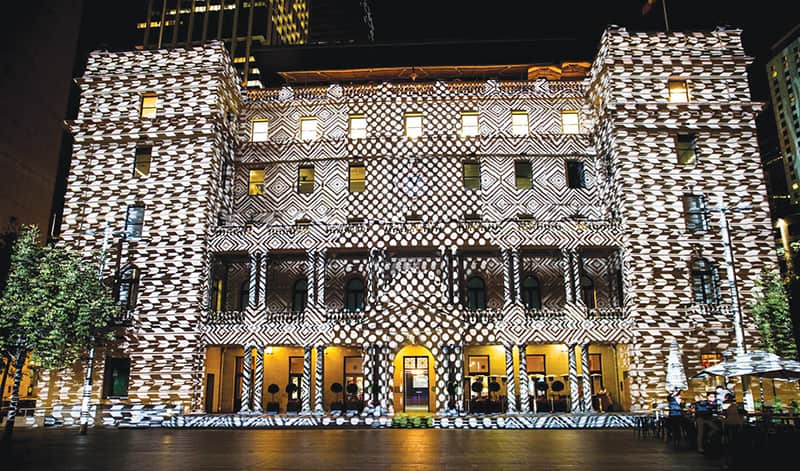
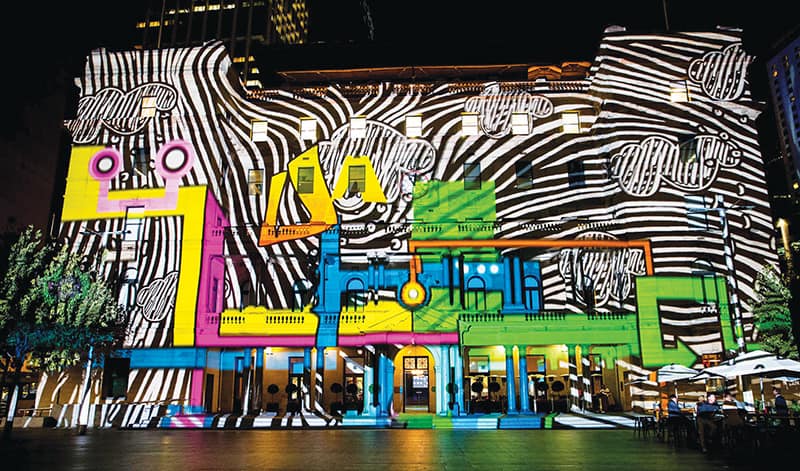
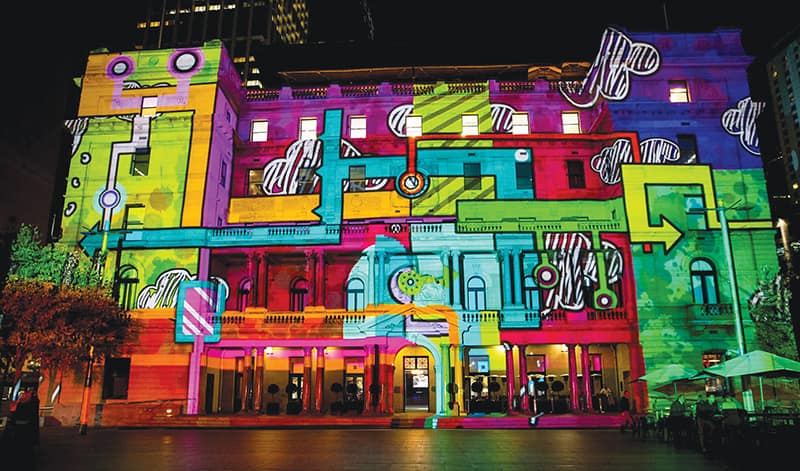
AROUND THE QUAY
Gathered around Circular Quay were quite a number of installations, varying in both scope and quality. The MCA (Museum of Contemporary Art) mapped projection installation Gamma World was an interesting techno journey. The content was designed and constructed by the Sydney-based Spinifex Group, while the hardware platform was designed, installed and operated by projection, and all-round video specialists, Technical Direction Company (TDC).
Again supported with a disappointingly-low level sound track, the dynamic of the display couldn’t truly be appreciated until you could immerse yourself in the complete audio and visual experience. It was a very intense show and quite different from others of the same genre. Although the experience was more enhanced on close-up viewing, the MCA really stood out when viewed from across on the eastern side of the Quay.
Over at Customs House, TDC and French content design firm Danny Rose were back again for the more dance-oriented show Play Me. Theoretically it was a show that had the ability for interaction from a dancer on a podium. The public could take pride of place on the podium and ‘play’ the façade as though it were an instrument. It was a little difficult to observe just how much playing was actually happening, though a comment from a performer summed it up: “I don’t know if it actually did anything, but I had heaps of fun!”
BROAD SWEEP
Looking around the vista that is the greater Circular Quay, the displays ranged from phenomenal to almost gaudy. The treatment on the Cahill Expressway and ferry terminals was rough at best. There seemed to be excessive light pollution and spill, not only off in to the sky, but also in the eyes of those walking the precinct. The lasers randomly splashing buildings with Congo blue splattered on them were underwhelming. With such a great canvas and the available technology, it is amazing that the Quay is not a coherent and sophisticated display.
Moving away from the Quay toward Martin Place along the Vivid Light Walk, many of the local businesses had got aboard the Vivid bandwagon. The Intercontinental hotel had a pleasant colour-changing façade. Some convenience stores got in on the action with LED pars in windows and even construction sites didn’t pass up the opportunity to contribute to the festival with big colour washes up skeletal building structures.
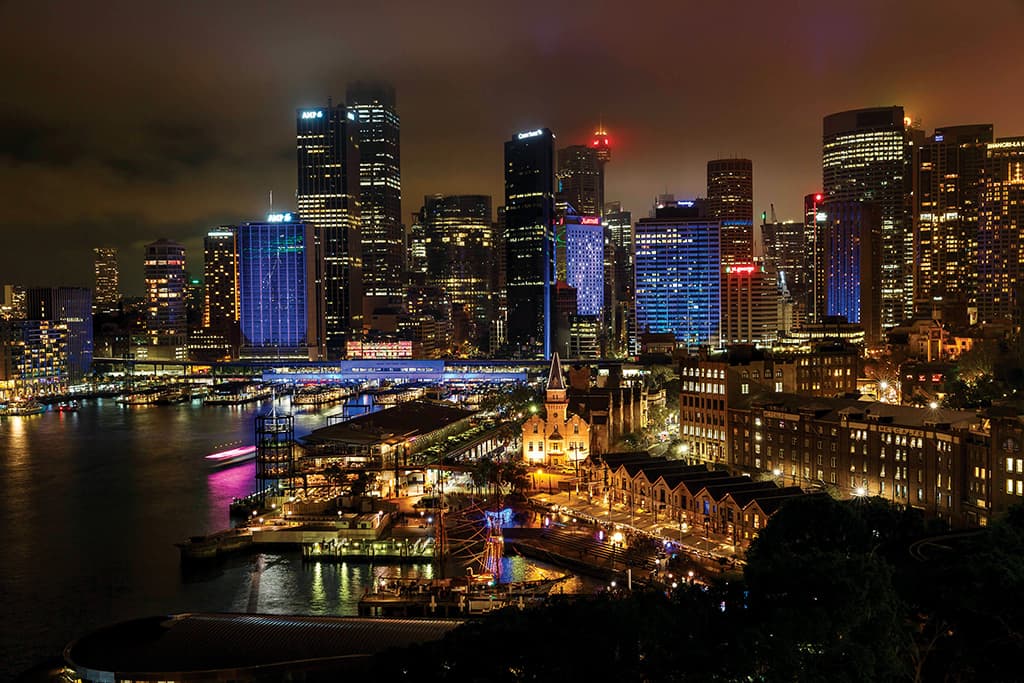
CONCRETE FOREST
Martin Place, an area that again is normally completely-unimpressive by night, blossomed under some Vivid love. Designed and animated by Ample Projects, the Urban Tree projection on the MLC building tower had some very clever content mapped on the façade with Coolux Pandoras Box. [See the front cover].This engaging tale of a tree growing with birds and wildlife in abundance made for some wonderful visual moments. The content was incredibly sympathetic to the physical structure of the building and played beautifully with the architecture. For this writer it was definitely the highlight of the festival. The five-minute show had many festivalgoers transfixed.
Although relatively modest, it was the simplicity of the concept and the animation that made the installation so beautiful. Oracle Attractions had an interesting laser display, Beneath The Beams, running the entire length of Martin Place, from George Street to Macquarie Street. A really impressive part of that piece was the distributed haze system that consisted of a hazer in a box at ground level, with plastic piping directing the haze up street light poles and releasing it into the air at a height of 4m or so. This allowed the aerial effects in Martin Place a chance to bloom, and offered other displays some particles in the air on which to play.
Elsewhere in Martin Place, self-described UK ‘light artist’ Simon Brockwell created a light sculpture entitled Sky Flower, which was created with a variety of Robe lighting fixtures supplied by Canberra-based production house Elite Sound and Lighting. The Sky Flower was an aerial light sculpture composed from a mixture of Robe LED and discharge sources, with the Robe MMX Blade simulating the stamen of the flower. The installation, which was set to several music tracks, was designed to be appreciated from a distance, and for a more immediate audience.
DARLING HARBOUR DELIGHTS
Further afield in Darling Harbour, world-renowned Aquatique Show were engaged to present one of their signature water, laser, light and pyro shows. With a long-established foothold in this genre, the French-based company yet again show why they are the best in the world at what they do. Based on the Louis XIV’s Water Garden in Versailles, the installation was best viewed from the southern end of Darling Harbour, though it still had great effect from Pyrmont Bridge and the Northern end of Cockle Bay where arguably more people stopped each hour to view the shows.
Sydney-based content creation company Digital Pulse provided the content for the five themed shows that played in rotation throughout each night of the two-week festival. The themes for the displays were Sydney Dances, The Night Fantastic, Love, Joy, and Women Rock. Digital Pulse had only eight days in which to create the 25 minutes of content for the five pieces. Not that you could tell as each performance was wonderfully crafted and integrated particularly well with the scenic elements of water, light, pyro and audio. Aquatique Show was well supported by Oracle Attractions and TDC who helped deliver the performances.
Also in Darling Harbour, the Novotel and the Ibis hotels got in on the Vivid action by lighting their façades with LED washes. The Australian National Maritime Museum, to the north of Pyrmont Bridge, presented Aquatic Nights, with the museum’s iconic rooftop as the canvas for a compelling animated presentation set to a bespoke soundtrack. TEC was commissioned to create a four-and-a-half minute original projection inspired by the Museum’s Whale Season exhibitions. The show, which could be viewed from various locations around Darling Harbour, was played back from the Museum’s own external projection system that TEC designed and installed for them in 2012.
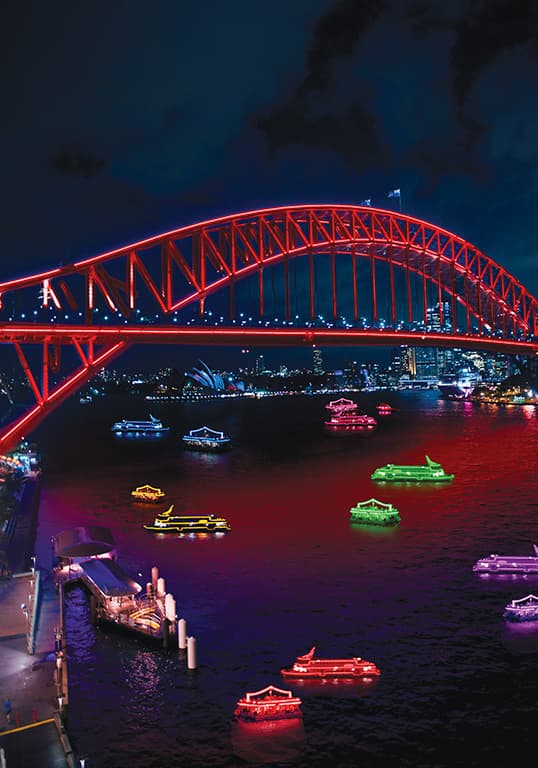
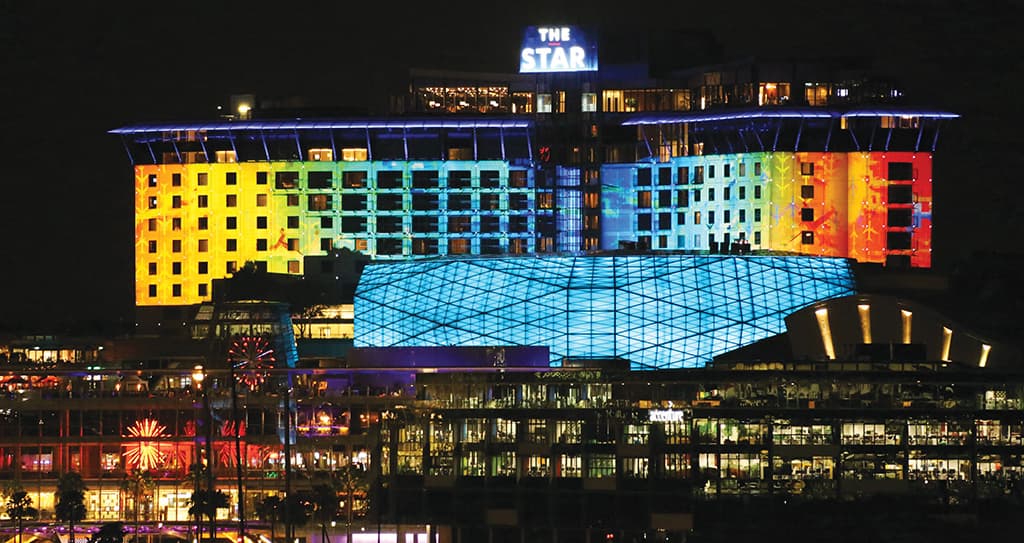
STARS COME OUT
The Star casino entered the Vivid fray for the first time this year. The entire façade of the Astral tower was lit by five 26K Barco projectors and five 20K Christie projectors across ten streams of video. Again provided by TEC, the façade was a challenge to map and came with its share of stakeholder sensitivities. Milne pointed out that there are 128 room windows on the façade that needed to be carefully masked so as not to disrupt the expensive views or affect the sleep of VIP guests. He said with glint of pride, “We knew every room number associated with each window, so if we had a complaint we could adjust the mask for any given room quickly and easily without risk of affecting other windows”. To their credit, TEC received not one guest complaint, even during the initial projector line ups.
A BRIDGE TOO FAR?
To complete the circle, one could not pass through the harbour, or even be on the western foreshore, without seeing the installation from 32 Hundred Lighting on the old coat hanger. Colour The Bridge, was designed by 32 Hundred founder and lighting designer, Iain Reed, who used 100,800 custom LED fixtures to illuminate the Western Side of the bridge. The rig was controlled from a bespoke interactive system that allowed the public in front of Luna Park, to ‘paint’ the bridge in their own colour scheme. This system was left in place after Vivid so Sydney could (hopefully) celebrate a State Of Origin rugby win by turning the bridge blue.
Not content with merely lighting up Australia’s most recognised icon, 32 Hundred were also responsible for the more subtle, but ever-so-tricky Harbour Lights. Attaching RGB tape light, snake light and more, to various vessels that traverse the harbour every day, 32 Hundred utilised geofencing technology to define areas around the harbour. Each area was then allocated a specific colour. GPS units integrated with the RGB control systems in the vessels thus allowing the water taxis, ferries and charter craft to automatically change colour, according to their location within the harbour. It’s a simple trick and one that probably went un-noticed by the greater public. Then again, it is tricks like these that are often the best!
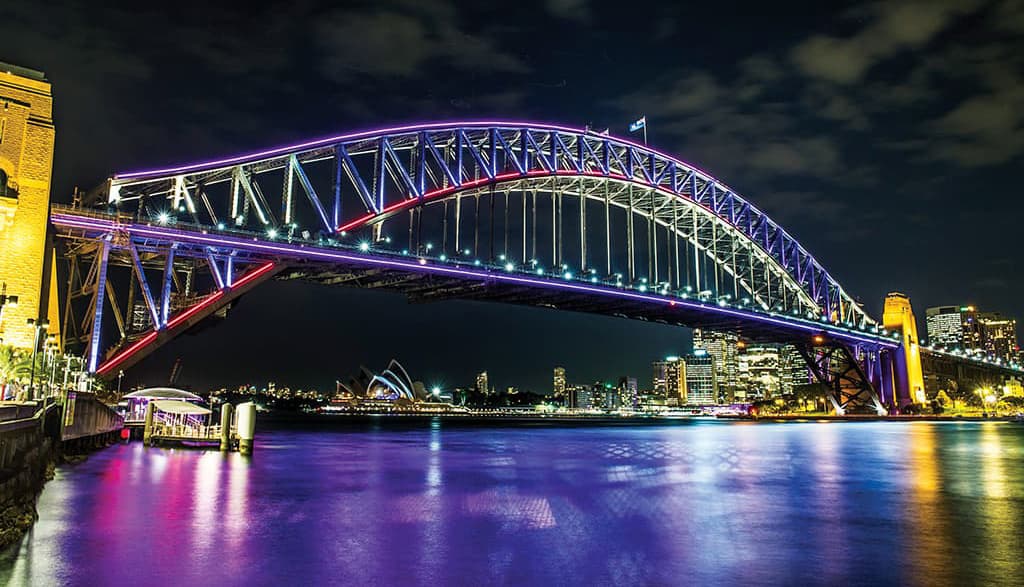
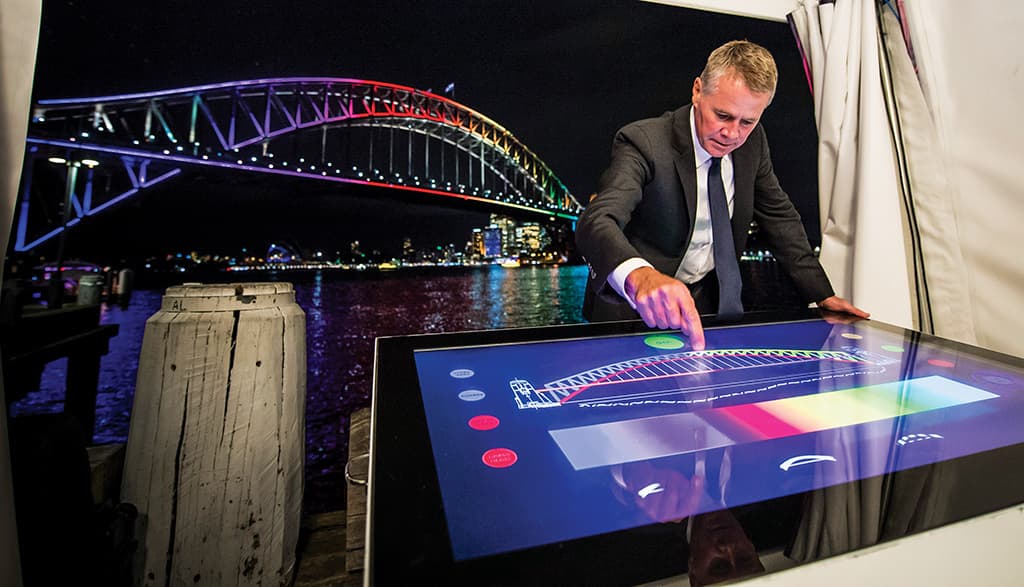
INSIDE THE HOUSE
A significant part of the event, is the Vivid Live festival at the Sydney Opera House. Curated once again this year by Fergus Linehan, the artists are many and varied, and step boldly outside of the normal day-to-day Opera House fare. I’ve been lucky enough to be the Vivid Live festival lighting designer for the past four years.
Among a host of offerings, this year’s line-up included The Pixies, Lauren Hill, Midlake, and a tribute to great disco legend, composer Georgio Morodor by the Heritage Orchestra, with an appearance and DJ set from the man himself. The Studio and Western Foyer of the Opera House were transformed in to a club and a bar respectively. Both areas certain to have raised an eyebrow from Opera House architect Jørn Utzon.
One of the highlights of Vivid Live 2014, was the touring production of Timeline. An audiovisual journey across 40,000 years of music history, the show was performed by the Australian Chamber Orchestra and pop band The Presets under the control of creative director Richard Tognetti and Vivid creative advisor, Ignatius Jones. With video content created by Sydney content firm, Digital Pulse, the two-hour show was not only an epic musical journey through almost 200 pieces of music, but a visual one with content developed from a combination of original artwork and photography, with fully-animated content to support the more contemporary sound of the Presets’ mash-ups.
For me, the most exciting part of a programme like Vivid Live, is seeing the Opera House visited by festivalgoers who would never usually attend a show there. It is particularly satisfying to see the venue being used in fresh and interesting ways that breathe new life in to the 40-year old building.
It is easy to be swept away by all the media and press release hype proclaiming the huge success of the Vivid festival, but to all intents and purposes Vivid is a huge success and achieves exactly what it sets out to do. Sydney is certainly not a particularly well lit city. Outside a long-exposure photo from a stills camera across the water, the Bridge and Opera House are flat and under lit. It is great, that for at least two weeks of the year, we get to shake that up a bit. Thanks to Vivid.
MORE INFORMATION:
The Electric Canvas: www.theelectriccanvas.com.au
Technical Direction Company: www.tdc.com.au
32 Hundred Lighting: www.32hundredlighting.com
Oracle Attractions: www.oracleattractions.biz
Aquatique Show: www.aquatic-show.com
Spinifex Group: www.spinifexgroup.com
Digital Pulse: www.digitalpulse.com.au
Ample Projects: www.ampleprojects.com

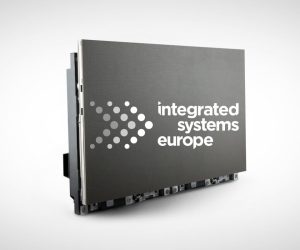
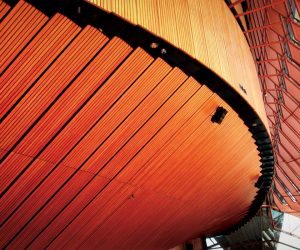
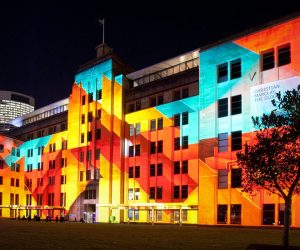
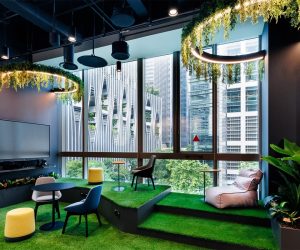
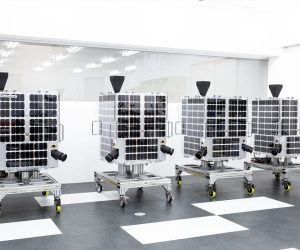
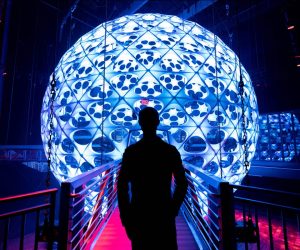

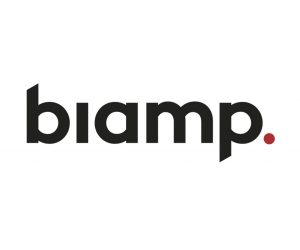

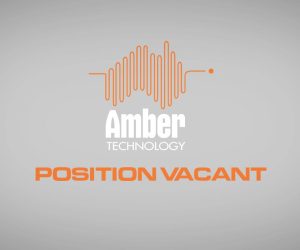



RESPONSES